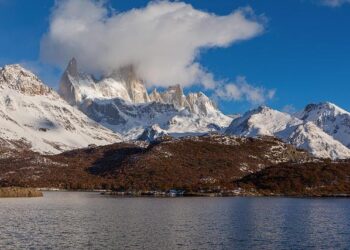Recent extreme weather events in South Africa, including floods, a rare tornado, and mid-latitude cyclones, have severely disrupted the tourism industry. Human geographer Kaitano Dube highlights that rising global temperatures and increased storm intensity, driven by climate change, are damaging tourism infrastructure in coastal and inland regions. The economic losses from these events are significant, stressing the need for resilient infrastructure and proactive adaptation strategies for the future.
Sign up for your early morning brew of the BizNews Insider to keep you up to speed with the content that matters. The newsletter will land in your inbox at 5:30am weekdays. Register here.
Join us for BizNews’ first investment-focused conference on Thursday, 12 September, in Hermanus, featuring top experts like Frans Cronje, Piet Viljoen, and more. Get insights on electricity and exploiting SA’s gas bounty from new and familiar faces. Register here.
By Kaitano Dube*
South Africa has experienced some extreme weather events in recent months. These have included floods and an uncommon tornado in South Africa’s KwaZulu-Natal province, floods in the Eastern Cape and mid-latitude cyclones in the Western Cape. Kaitano Dube, a human geographer who has researched tourism, extreme weather and resilience to climatic threats, says these severe storms are set to disrupt tourism.
Is climate change affecting tourism in South Africa?
The increase in carbon emissions has caused a rise in global temperature, a key driver of climate change. In the past two years, and 2024 in particular, temperatures have reached record highs. The number and severity of extreme weather events and associated damage and losses from these have increased worldwide.
Human-induced climate change and climate variability have played a part in the increase in these extreme weather events. In southern Africa and South Africa, the coastal areas have borne the brunt of extreme weather events.
Coastal tourism has been hard hit by sea storms, tropical cyclones, heatwaves, rising sea levels, rough seas, cut-off lows, wildfires, coastal and fluvial flooding (where rivers burst their banks). The increased intensity of tropical and mid-latitude cyclones (intense rainfall, wind and high tides) has caused severe damage to coastal tourism infrastructure in South Africa’s coastal provinces, which are a hub for tourism.
The KwaZulu-Natal floods in April 2022, which were worsened by climate change, killed 435 people and were the most catastrophic ever in that province. Again in April 2024, floods in KwaZulu-Natal destroyed holiday homes, beaches and tourism infrastructure, turning holiday destinations into disaster areas.
What economic losses has extreme weather caused in the tourism sector?
The damage from extreme weather events has been costly to guest houses, tourists, hotels and businesses operating adventure activities. There have been losses in economic potential and revenue for small and big cities.
The 2022 floods in KwaZulu-Natal caused an estimated R7 billion worth of damage (US$387 million) to 826 companies, many of these tourism ventures. They also disrupted operations at King Shaka International Airport, which is a key tourism resource.
In June 2024, a tornado and cut-off lows (isolated wells of cold air in the upper atmosphere which tend to move slowly, often dropping large amounts of rainfall in one place) again destroyed holiday homes in KwaZulu-Natal. The weather also disrupted air traffic between Durban’s local and international airports, resulting in domestic and international flights being diverted. This is quite costly.
The port of Durban has experienced damage from floods, disrupting cruise ships and yachts. The port of Cape Town is equally vulnerable to extreme gusty winds, which play havoc with cruise ships, yachts and ferries, including those to Robben Island, a major tourism hub.
Extreme weather has also affected inland provinces such as Mpumalanga, affecting one of Africa’s largest game reserves, the nearly two million hectare Kruger National Park. Droughts are a cause for concern. Floods are increasing in these parks, devastating tourism infrastructure like camps, roads, bridges and picnic sites.
My research has found that there are more than nine flood hotspots in Mapungubwe National Park. Almost all flooding events there are linked to extreme weather events. Mapungubwe is also a world heritage site of immense historical importance, as the site of the largest indigenous African kingdom in southern Africa between 1200 and 1290 AD.
Sea level rise and tides are another critical threat to coastal tourism. There is a strong relationship between what happens in the atmosphere and what happens in the ocean. Fronts, cyclones and storms that affect the west and eastern coastline of the country are a major trigger for high, damaging and disruptive tides.
Cut-off lows are equally notorious for triggering sea storm surges, which can trigger coastal flooding in low-lying areas. Spring tides combined with climate change have also been problematic recently: they’ve caused catastrophic damage to coastal facilities, and dangerous rogue waves (abnormally large waves).
My research on the effects of the rising sea levels on coastal national parks has found that the most vulnerable coastal park is the Garden Route National Park on the Indian Ocean side of South Africa. Properties in the Tsitsikamma National Park, part of the Garden Route National Park, are in perpetual danger from rising sea levels and surges. Parts of the park have been flooded by gushing water from the ocean during high spring tide episodes.
The Knysna area of the Garden Route, followed by the Cape Point section of Table Mountain in Cape Town, will experience a one metre rise in sea level around 2100. Sea level rise is a threat to infrastructure, heritage, beaches, tourism employees and tourist safety.
Fire and increased frequency of heat waves are also a risk to several tourism destinations along the coast. The national parks that are most vulnerable to increased incidences of fire include Table Mountain National Park and the Garden Route National Park.
What can be done to prevent this damage to tourism?
There is a need to revisit development plans for tourism infrastructure along the coastline. Infrastructure needs to be stronger and more adaptable. There may also need to be a retreat from high-risk areas to reduce damage and loss.
Infrastructure and buildings must be designed for climate resilience, especially in areas prone to flooding. Urban planners must take into account calculations of the maximum probable floods for specific areas. Building codes have to be adjusted to respond to new climate scenarios.
These adaptation measures must be supported by a robust early warning system to reduce losses. Appropriate disaster and business insurance must be set up to ensure that tourism businesses can recover from climate disasters. This has to be backed by progressive policies and technology that are aimed at building climate change resilience.
*Kaitano Dube: Faculty of Human Sciences Acting Research Professor, Vaal University of Technology
This article was first published by The Conversation and is republished with permission
South Africa’s Tourism Mecca – Cape Town – hit by torrential rain, high winds
Cape Town, South Africa’s tourist capital, has been battered by torrential rains and howling winds that have caused extensive damage to infrastructure and driven thousands of shantytown residents from their homes.
“It is almost impossible for us to do an accurate assessment at the moment but we believe that some 2,800 structures, mainly in the informal settlements, have been severely damaged” and about 8,460 people have been affected, Sonica Lategan, a spokeswoman for the City of Cape Town’s Disaster Risk Management Center, said by phone on Tuesday. The city has endured winds of up to 50 kilometers (31 miles) per hour over the past 48 hours, and a rain deluge of more than 201 millimeters (7.9 inches) in that period, she said.
Three rivers in the city have burst their banks, flooding several roads, and others are expected to follow suit. The coastline was hit by massive waves and shipping has been disrupted. While there were no immediate reports of casualties, at least three people were injured in weather-related incidents.
The inclement weather is expected to continue into the weekend, and city officials urged residents to stay home if possible until the storms abate.
The Liesbeek, Lotus and Eerste Rivers have all begun to burst their banks.
Please stay away from fast flowing water and immediately report any life threatening situations to the City’s emergency call centre. @CityofCT pic.twitter.com/DtyCYI8W4F
— Geordin Hill-Lewis (@geordinhl) July 9, 2024
“We have noticed there is an increased frequency of these storms over the past decade,” Lategan said. “We believe this is a result of global warming and the use of fossil fuels.”
Read also:
Climate change behind Western Cape’s record rains as flooding wreaks havoc
Climate change and the complexities of the Cape storms – Andrew Kenny
Travellers buckle up: Climate change is making flying more turbulent – Lara Williams
© 2024 Bloomberg L.P.
>>> Read full article>>>
Copyright for syndicated content belongs to the linked Source : BizNews – https://www.biznews.com/travel/2024/07/10/climate-change-threat-sa-tourism































